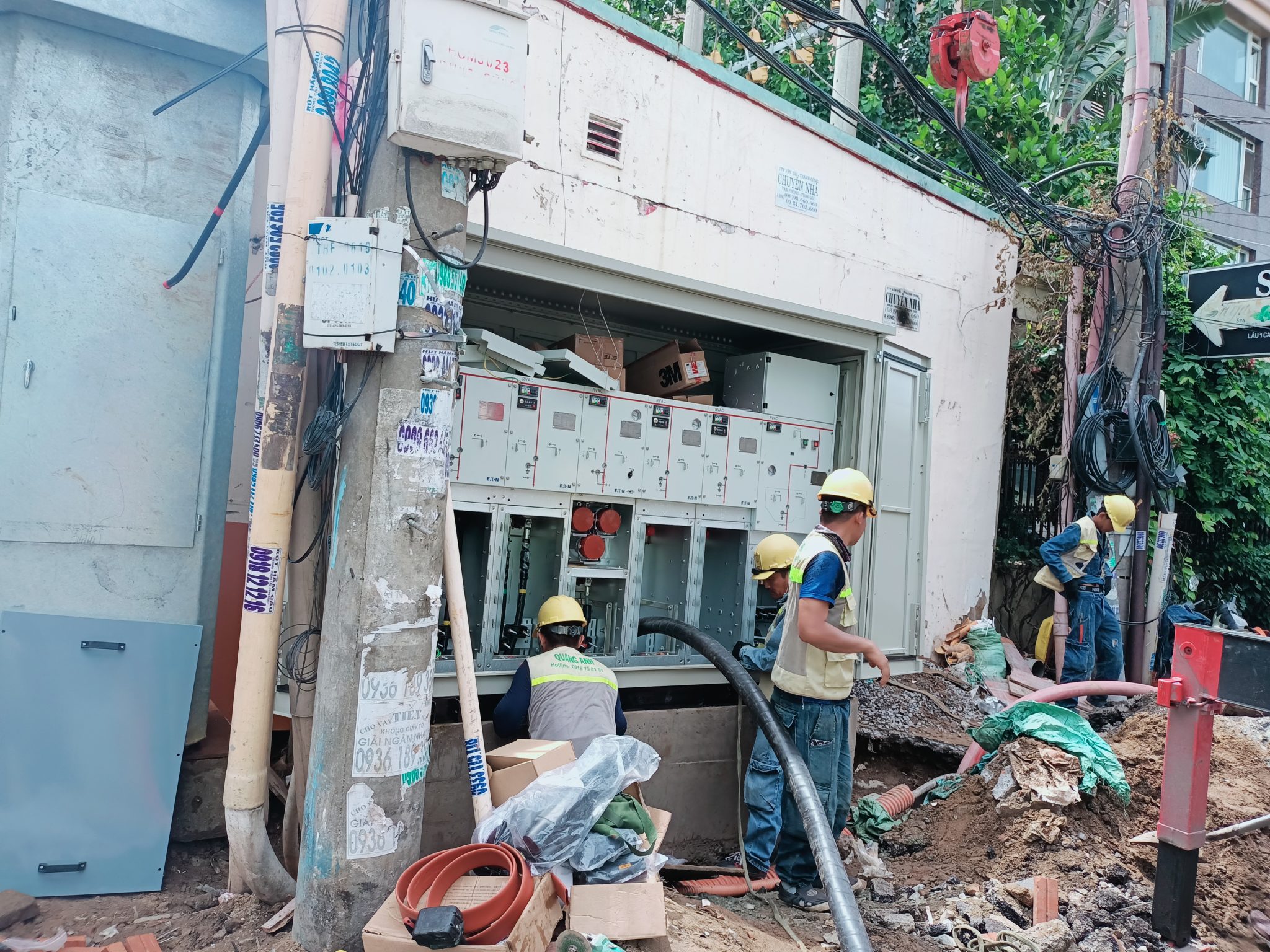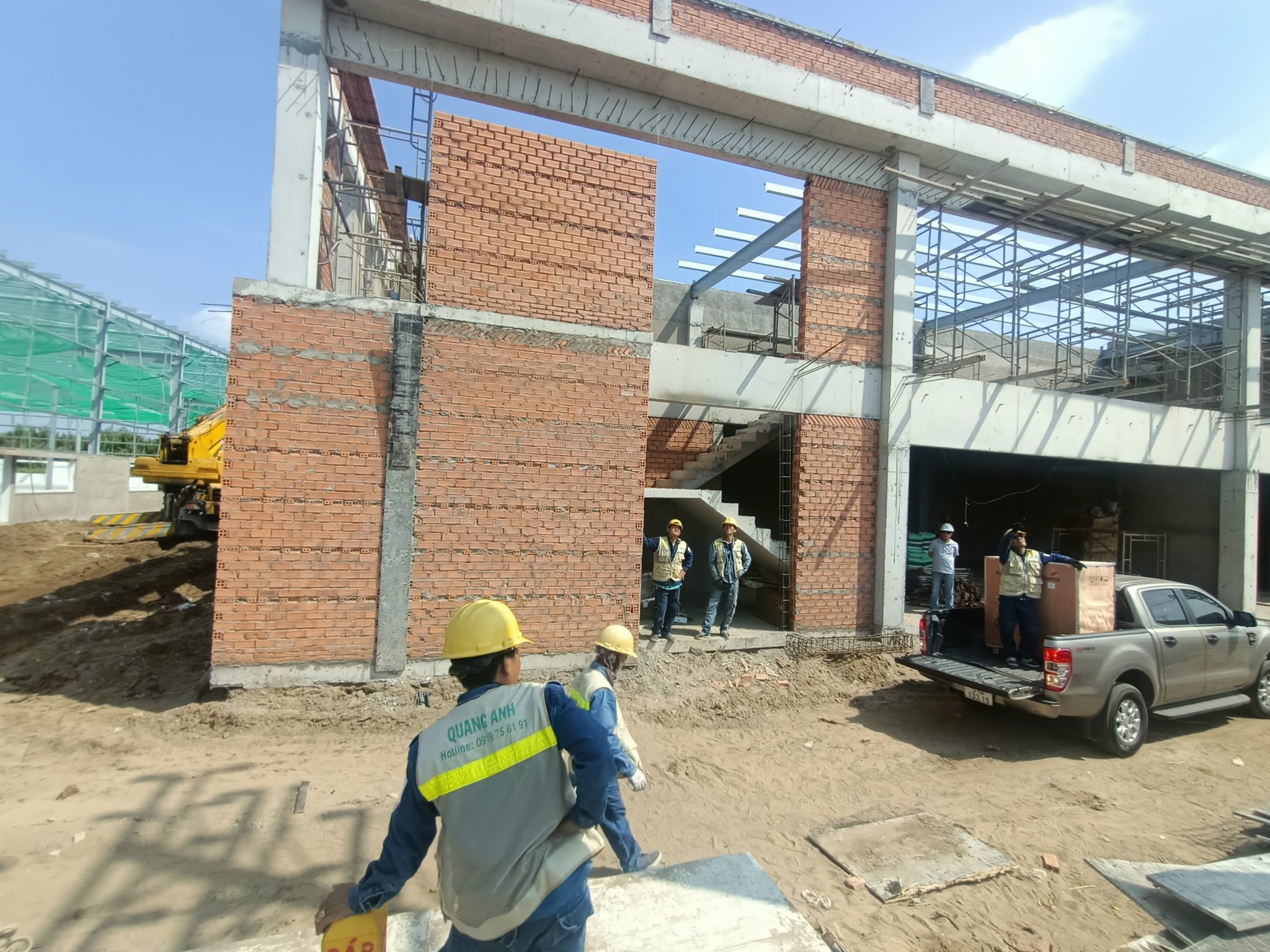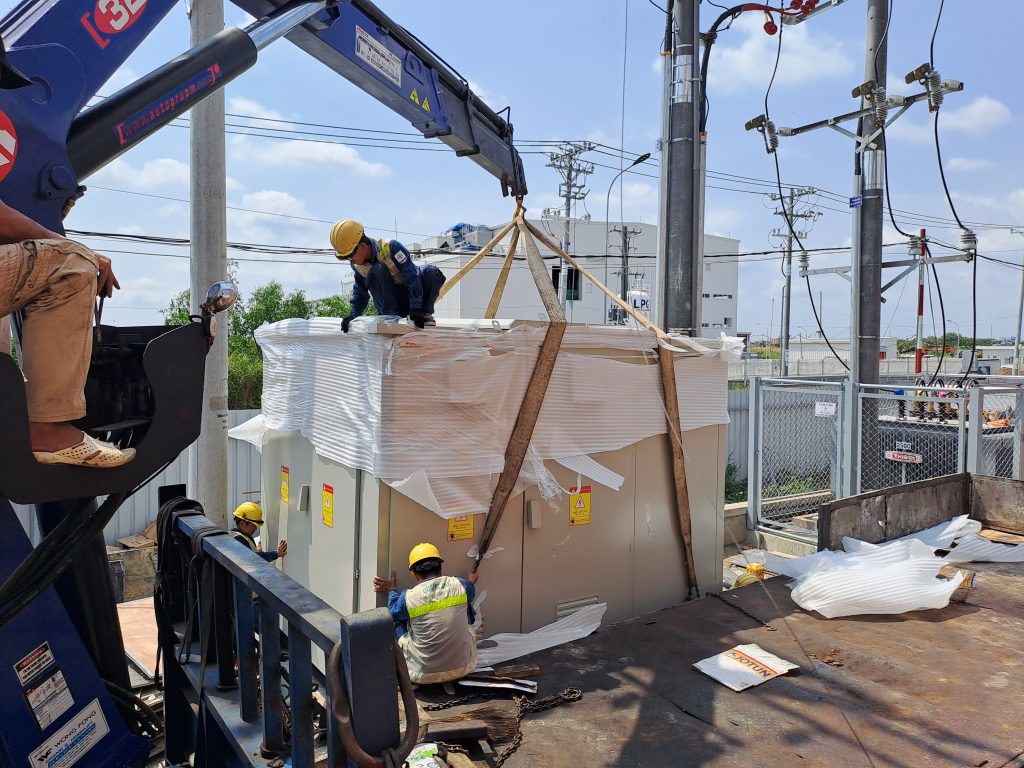News
Industrial Electrical System Upgrades: Process and Standards
Upgrading industrial electrical systems ensures load capacity is met, optimizes performance and safety, and serves the growing production needs.
Importance of Upgrading Industrial Electrical Systems
Upgrading industrial electrical systems is necessary to ensure responses to load demands due to increased equipment and production capacity. It also helps mitigate explosion risks from outdated and unsafe wiring systems, improving operational efficiency to prevent energy waste.
Upgrading industrial electrical systems is not only an optimal choice but also a mandatory requirement for safe and efficient plant operation.
- Ensuring Safety and Reducing Risks: Replacing outdated equipment, upgrading insulation, and installing advanced protection systems like leakage circuit breakers or smart relays can prevent incidents related to explosions and electric shocks.
- Increasing Efficiency and Saving Energy: By using new generation technologies such as new generation inverters and industrial LED lights, the system becomes more efficient and economical. Additionally, an automatic energy management system helps optimize energy usage, thereby reducing operating costs.
- Meeting Expanded Production Requirements: The development of technologies like IoT and industrial robots requires electrical systems with large capacities to meet new demands, making upgrades necessary for stable power supply.
- Compliance with New Standards: Meeting standards of electrical safety and environment such as IEC and ISO 50001 helps businesses comply legally and avoid unnecessary legal risks.
- Supporting Digital Transformation and Automation: SCADA systems and real-time monitoring are the foundation for modern digital plants, helping accurately integrate IoT sensors and data analysis.
- Reducing Downtime: Utilizing a modern electrical system can reduce downtime by 30-50% due to the high stability and reliability of the equipment.
- Environmental Protection: New technology is not only energy-saving but also reduces CO₂ emissions, aligning with global sustainable development trends.
Highlighting Upgrade Trends (2023-2025)
- Smart Lighting Systems: Automatically adjust brightness according to production needs, optimizing light sources.
- GIS Substation: Reduce installation area by up to 40% compared to traditional stations, optimizing plant space.
- Surge Protection Systems: Protect sensitive equipment, ensuring safety for industrial environments.

Technical Process of Upgrading Industrial Electrical Systems
The process of upgrading industrial electrical systems includes assessing the current situation, designing high and low voltage electrical networks, and implementing upgrades. Replacing wiring and equipment in accordance with IEC/TCVN standards and installing energy monitoring systems like SCADA, IoT is necessary for load management.
In the context of modernizing the industrial foundation, upgrading the industrial electrical system becomes urgent to meet the increasing electric load demands. This article will guide you through the electrical construction process in detail, applying the latest IEC electrical standards and electrical monitoring systems.
- Construction and Upgrade Process of Electrical Systems
- Survey and Design: Start by thoroughly assessing the current state of the electrical system and identify new electrical load needs. Detailed design drawings should ensure elements like cable spacing, electrical cabinet arrangement, and load distribution comply with current technical standards.
- Material Preparation: Carefully select equipment such as transformers from reputable brands like ABB, Mitsubishi, Schneider, and fundamental materials like Cadivi cables that meet IEC and TCVN quality standards.
- Installation Implementation: Carry out installation of medium voltage underground cables from the source to the substation, install electrical cabinets, switchgear, and industrial lighting systems. This process requires strict adherence to technical and safety requirements to ensure the highest efficiency and safety.
- Inspection and Trial Run
- Operation Testing: Detailed check of actual capacity and voltage stability of the system after upgrading. The load bearing capacity and potential incidents need to be tightly monitored through a remote monitoring system IoT.
- Safety Evaluation: Check for electrical leaks, grounding, and insulation according to TCVN 5699-1:2010 standards to ensure safety during operation.
- Maintenance and Optimization Post-Upgrade
- Periodic Maintenance: The maintenance process must include monitoring equipment conditions and measuring electrical parameters such as insulation resistance and leakage current regularly to detect issues early.
- System Optimization: Utilize energy-saving solutions such as industrial LED lights and inverters for adjusting motor speed to enhance energy efficiency.
- Applicable Technical Standards
- International Standards: Apply IEC standards such as IEC 61000-4-2 for immunity to interference and IEC 61439 for electrical cabinets to ensure quality and safety.
- Vietnamese Standards: National standards like TCVN 8241-4-2 and TCVN 1983:2013 are widely applied in the installation and maintenance of electrical cables to ensure maximum safety.
- New Technologies in Electrical Upgrades for Industry
- Remotely Monitored Systems: IoT becomes a powerful tool in monitoring operational parameters like temperature, load current, and source coordination. This helps predict incidents and optimize maintenance.
- High-Grade Insulation Materials: Using LSZH cables is a typical example that reduces explosion risks and enhances environmental safety.
The upgrade process requires strict coordination from design, construction to operational supervision, while continuously adhering to standards and new technologies to yield optimal efficiency.

Technology Trends in Upgrading Industrial Electrical Systems
Technological advances include integrating smart electrical systems with IoT sensors, using renewable energy like rooftop solar power, and employing high-quality insulation materials such as XLPE, CSR to optimize the electrical system.
Today, upgrading industrial electrical systems is increasingly important and necessary for sustainable development. With advancing technology, the integration of IoT Technology Solutions and smart electrical systems is revolutionizing this upgrade.
Advanced AI has evolved to the point of acting as Agentic AI, allowing automatic decision-making and system operation optimization without manual intervention. This not only helps manage electrical loads efficiently but also aids in forecasting demands and detecting incidents quickly. AI also plays a significant role in analyzing large data from IoT sensors, helping businesses build strategies for energy saving and cut operational costs.
Moreover, smart IoT sensors are widely deployed to monitor equipment performance and surrounding environments such as temperature, humidity, and power consumption in real-time. Along with the development of 5G connectivity, data from millions of devices can be quickly and efficiently transmitted, laying the groundwork for a highly automated industrial electrical system. This is truly a significant boost for the trend of using smart electrical systems.
Simultaneously, the demand for clean and energy-efficient power is increasingly emphasized. Manifold management has shifted to environmentally friendly coolants like CO2, ammonia, and propane to replace HCFC and HFC, reducing greenhouse gas emissions. Inverter technology also proves effective as it can flexibly adjust power output, reducing energy consumption by 30-50% compared to traditional systems.
Automation is getting stronger with integrated control systems, combining IoT and AI Technologies, helping automate production processes, reducing errors, and improving accuracy. Predictive maintenance is widely applied, thanks to AI analyzing equipment data to forecast breakdowns and plan proactive maintenance.
Additionally, to ensure energy security and manage fluctuations, energy storage systems like industrial batteries and thermal storage technologies are also being boosted. Microgrids are an innovative solution, combined with renewable energy, helping provide continuous electricity to industrial areas.
In Vietnam, with a commitment to green transition, international standards such as ISO 50001 are being applied for energy management and carbon emission reduction in industrial operations. Heat recovery technology is fully exploited to utilize waste heat for electricity generation or heating, increasing overall efficiency.

Upgrading industrial electrical systems brings numerous technical and investment benefits, ensuring improved efficiency and enhancing capacity, contributing to the sustainable development of the industry.
Contact QuangAnhcons via Hotline: +84 9 1975 8191 for support in optimizing your industrial electrical system.
QuangAnhcons specializes in consulting and implementing industrial electrical system upgrades, ensuring international standards and high efficiency.

 Tiếng Việt
Tiếng Việt 简体中文
简体中文 Deutsch
Deutsch 日本語
日本語 한국어
한국어 ไทย
ไทย Русский
Русский Français
Français
